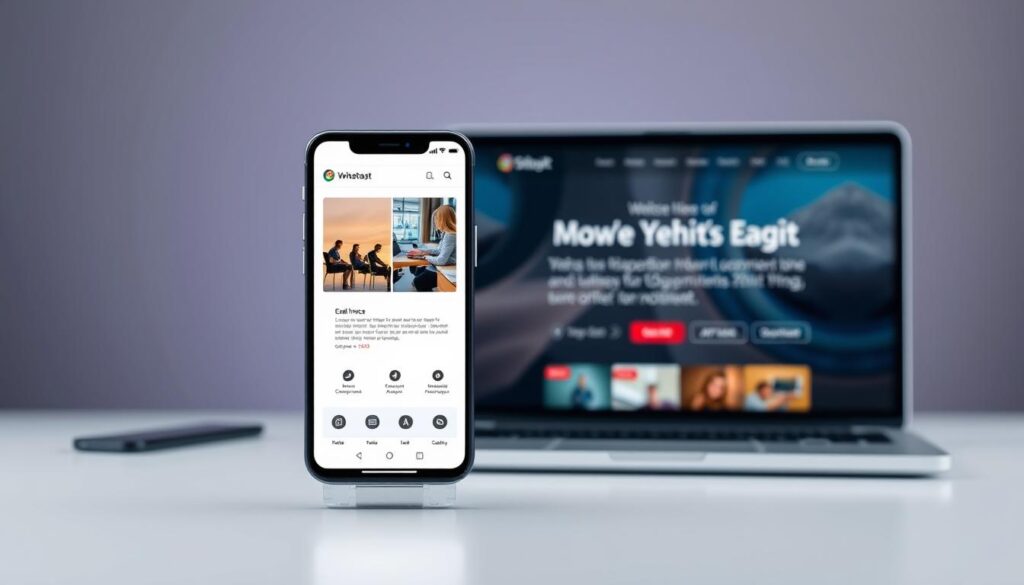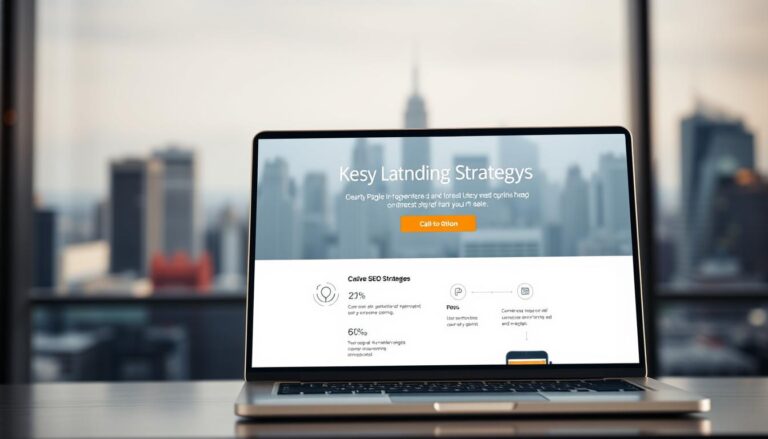I set out to prove that doing local seo with zero budget is possible. I rely on free tools, clear priorities, and steady execution rather than paid services I can’t afford right now.
I define success by practical signals: more calls, directions, and messages from search, plus better website conversions. I track progress using Google Search Console, Google Analytics, and GBP Insights to see what truly moves the needle.
My plan focuses on fundamentals. I tune my site to be fast and crawlable, fix Name-Address-Phone consistency, and clean up profile and listings across directories. I add products, photos, and service area pages so customers find the right page when they search.
I avoid gimmicks like spammy links and cheap packages that promise quick wins. Instead, I document a weekly workflow so every hour compounds results and keeps my budget at zero while I earn authentic reviews and steady improvements.
Key Takeaways
- Focus on free analytics and clear goals: calls, directions, messages.
- Tune your website for speed, crawlability, and local intent pages.
- Keep Name-Address-Phone consistent across profiles and citations.
- Use GBP updates, photos, and service pages to boost discovery.
- Document a weekly routine so small tasks compound into real results.
Why I’m doubling down on local SEO right now
Right now I’m focusing on nearby searches because they pull real visitors through my door. Nearly half of Google queries show local intent (46%), so investing time here maps directly to calls and foot traffic.
Organic work compounds. A well-optimized Google Business Profile lifts visibility in Maps and the local pack. That means more directions, calls, and real-world visits without ongoing ad spend.
What “local” signals really mean for visibility and foot traffic
Search engines weigh three things: relevance to the query, distance from the searcher, and prominence from reviews and citations. When I strengthen each signal, my business wins prime placement.
Why organic beats paid over the long run for small businesses
- I spend time on pages, services, and a complete business profile so the path from discovery to visit is short.
- My organic marketing keeps delivering after the work is done; ads stop the moment the budget ends.
- Encouraging and responding to reviews builds prominence and trust that drives better results over time.
My zero-budget game plan at a glance
A simple routine keeps my website improving every week without paid tools. I focus on tasks that show quick returns and repeat them so gains compound over a month.
Free tools guide my priorities. Google Search Console tells me which queries already find my pages. Google Analytics shows which sources drive conversions. PageSpeed Insights points to load-time fixes that improve user experience.
The free tools I rely on daily
- Use Search Console to spot queries, refresh low-hanging pages, and request indexing.
- Check Analytics for pages that convert so I spend limited time where it counts.
- Run PageSpeed checks and fix images, unused JS/CSS, and Core Web Vitals issues.
- Blend GSC data with free keyword research tools to map opportunities to pages.
- Keep a lightweight scorecard: speed, rank movement, and calls/directions.
Time vs. money: how I prioritize weekly actions
I block my week into short sprints: technical cleanup, on-page work, citations, and content. This helps me trade focused time for real results instead of spending cash.
Each month I set a Top 5 tasks list and rotate focus by week so small edits and consistent follow-up move the needle for my business.
Doing local seo with zero budget
I build my plan around a few free actions that give the biggest return for my time. These are simple tasks I can repeat and measure.
I make sure to touch my Google profile each week—update hours, add photos, or post short updates that show what’s new. Small changes keep my profile fresh and useful to customers.
I keep my website basics crystal clear so search engines and people know who I serve, where I operate, and how to contact me. I focus on one strong location page at a time and tighten on-page elements until they convert.
- I batch work: audits one day, content polish the next, and citations/reviews later.
- I track real signals: calls, directions, and form fills—not vanity metrics.
- I avoid shortcuts and invest in reliable citations, honest reviews, and helpful content.
My marketing rule is resourceful over resource-heavy. Scheduling reminders for seasonal updates and recurring tasks keeps this approach steady so the foundation scales when I add time or funds later.
Setting realistic expectations and avoiding cheap-SEO traps
Cheap promises often mask tiny time commitments and risky tactics. Many £99–£200 per month packages only buy 30 minutes to two hours of work when typical UK hourly rates are $61–$200. That math matters because a few rushed tasks rarely make a website or business more visible.
I focus on durable fixes. One-off technical audits, keyword planning, NAP citations, and review systems deliver more lasting results than bulked-up monthly reports.
Red flags I steer clear of when offers sound too good
- I ignore any agency or freelancer promising guaranteed first-page results; rankings depend on competition and content quality.
- If a proposal prioritizes high link volumes for a low fee, I walk away—automated links can harm long-term trust and rankings.
- I vet every service by asking what gets done each month, who on the team does the work, and which assets I’ll own afterward.
- I prefer measurable deliverables that compound over time rather than vanity metrics that hide poor ROI.
My rule: I’d rather buy a focused audit and execute the plan myself than pay a tiny monthly fee that buys almost no time or no real strategy.
Claiming and optimizing my Google Business Profile the right way
I treat my Google Business Profile as the single hub that drives map visibility and real customer actions. I start by claiming and verifying the profile so Google knows the listing is mine.
I complete every NAP field: my name, address, and phone number. I add correct hours and pick the best primary and secondary categories. This basic accuracy helps my business appear for relevant searches and supports long-term seo.
I upload strategic photos of the storefront, team, and recent work so people recognize my place and feel confident visiting. I list products and services in detail and publish short updates for offers and events.
- I link the profile to my website and track clicks so I can attribute calls and visits.
- I use Q&A to answer common queries, then fold those answers into my site copy for consistency.
- I ask for and respond to reviews promptly to build trust and prominence.
I keep one trusted copy of my listing across directories and check Insights monthly to see which posts, photos, or updates drive calls, directions, and clicks. Small, steady edits here deliver measurable gains for my business and improve overall seo.
NAP consistency and citations without spending a dime
I start every cleanup by listing where my business appears online and noting mismatches. I record my exact name, address, and phone number so the data is consistent across sites.
I treat this as a basic trust signal for search engines and customers. Clean data reduces confusion and helps improve my overall seo.
Finding and fixing core listings on trusted directories
I claim the most visible listings first: Google, Apple Maps, Bing Places, Yelp, and Facebook. These profiles move the needle for calls and visits.
- I audit each profile for mismatched name, number, or address and correct them immediately.
- I remove duplicates and consolidate reviews so businesses and traffic aren’t split across copies.
- I standardize formatting—suite numbers, abbreviations, and punctuation—to keep things uniform.
Free ways to keep my profile data accurate across the web
I use a simple spreadsheet to track login info, update dates, and which listings link back to my website.
- I fill free profiles fully, add photos, a clear description, and a website link to strengthen each citation.
- I check referral traffic to prioritize the listings that drive calls or a review so I spend time where it counts.
- I look for chamber, industry, and community sites to add credible mentions that help with building local signals.
Local keyword research with free tools
I start every keyword project by looking at what my site already ranks for and then build from there. That first step tells me which queries drive impressions and which pages need better titles or more helpful content.
How I uncover low-competition, high-intent phrases for my area
I combine Google Search Console with free tools like Google Keyword Planner, Ubersuggest, and AnswerThePublic to surface realistic phrases people use in my area.
For example, a plumbing business might target “emergency plumbing repair [city]” or “best plumber near me.” I validate those phrases against GSC queries and prioritize ones that already show impressions.
Mapping keywords to pages and “near me” intent
I map one primary keyword to each page and add related secondary terms in headers and body copy to avoid cannibalization.
- I check SERPs to confirm search intent and pick the right page type (service page, how-to, or comparison).
- I record targets in a simple sheet: title tags, H1s, and internal links to support each page.
- I include neighborhoods and landmarks where natural, and I revisit research monthly to refine pages from new query data.
I measure success by tracking changes in impressions, clicks, and conversions for each mapped page. That tells me which keywords to double down on next.
On-page SEO fundamentals I handle myself
I prioritize clear on-page signals so search engines and people understand each page fast. These basics improve crawlability and make the website easier to use.
Title tags, meta descriptions, headers, and internal links
I rewrite every title tag and meta description to match page intent and include the primary keyword naturally. That increases click-through and sets correct expectations.
- I structure H1–H3 so content flows logically and answers questions in order.
- I add internal links from relevant pages to priority pages using clear anchor text.
- I maintain a short change log of edits so I can tie updates to shifts in rankings and conversions.
Alt text, schema basics, and crawl-friendly site structure
I add descriptive alt text to images so they help accessibility and image search visibility. I use basic schema like LocalBusiness and FAQ to clarify content intent to search engines.
I check that important pages are a few clicks from the homepage, generate an XML sitemap, and confirm robots.txt isn’t blocking essentials. I also use canonicals and 301 redirects to resolve duplicates and consolidate old URLs.
I review Core Web Vitals and fix issues hurting LCP, CLS, or INP so pages load quickly and feel responsive. These on-page steps make the site clearer, faster, and more likely to convert visitors into customers.
Creating content that answers local search intent
My content strategy starts by listing the problems customers actually need solved in an area. I then map those problems to three page types: location pages, service pages, and utility blog posts.
Location pages state coverage, directions, neighborhood FAQs, and contact options so people know I serve their city. These pages help search understand my business footprint.
Service pages match commercial intent. I include pricing cues, process steps, testimonials, and clear calls to action so customers can decide quickly.
Utility posts that win clicks
I publish things like checklists, comparisons, and how-tos that solve real problems. These posts attract referrals, links, and queries that feed service pages.
- I weave primary and secondary keyword variations into headers and body without stuffing.
- I add local references, photos, and brand proof to build trust.
- I cross-link related pages to guide people from advice to contact forms.
I refresh older posts with new products, examples, or stats and watch which pages drive calls and messages so I can repeat what works.
Mobile-first performance on a shoestring
Most visitors arrive on phones, so I tune the site to be quick and intuitive. Google’s mobile-first indexing means the mobile experience shapes rankings, and faster pages lower abandonment.

Quick wins for speed, navigation, and Core Web Vitals
I start with PageSpeed Insights and prioritize fixes that give the biggest mobile gains. Compressing images, deferring non-critical JavaScript, and switching to efficient formats usually move the needle fastest.
I simplify navigation so key actions—call, directions, contact—are visible without pinching or scrolling. Reducing layout shifts by setting image dimensions and stabilizing fonts improves CLS and perceived speed.
- I trim third-party scripts and remove unused code to cut main-thread work.
- I check tap targets and form inputs on small screens to prevent errors and lift conversions.
- I use lightweight images and caching so repeat visits feel instant and responsive.
I measure progress over time by watching Core Web Vitals, mobile bounce rates, and conversion trends. Testing on real devices catches issues lab tools miss and helps deliver steady, measurable results: faster pages, clearer navigation, and higher engagement on mobile traffic.
Review generation and reputation management I run in-house
Customer feedback shapes both my visibility and my service priorities. Reviews influence prominence in local rankings and can show up in profiles or organic snippets. I focus on trusted platforms that people use most: Google, Yelp, and Facebook.
I ask ethically. At the point of service I make a short, clear request and follow up by email or text with a direct link. I rotate platforms so one channel doesn’t fill up while others remain empty.
My rules are simple and honest: I never offer incentives. I explain how a review helps other customers and helps me improve. I add a brief “Review Us” section on my website and a link in my email signature to grow steady volume.
I respond to every review. I thank positive reviewers, address problems professionally, and invite unhappy customers to continue the conversation offline. I include my business name and service details when relevant so new readers get context.
- I log common praise and complaints to update service pages and FAQs.
- I watch how review count and average rating correlate with calls and messages from search.
- I keep my name, address, and contact info visible so people can reach me after reading feedback.
Budget-friendly link building that avoids spam
I aim to earn links by offering useful content and timely expertise to reporters and editors. My goal is steady authority for the pages and services that matter most, not raw volume.
Quality beats churn. I focus on guest posts, Connectively (HARO) responses, and honest partnerships that produce real mentions and links. These tactics fit my weekly workflow and scale without paying for risky schemes.
Guest posts, HARO/Connectively, and partnerships
I pitch helpful, non-promotional posts to industry and community sites that serve people likely to need my services. Repurposing top-performing content creates fresh angles for guest pieces.
I monitor Connectively for journalist queries I can answer fast. Concise, expert replies often win earned coverage and a link back to a relevant page.
Broken links and local news mentions
I scan related sites for broken resources and offer my content as a replacement. This helps site owners and can earn a high-value link.
I also reach out to local reporters with useful commentary or event news. Small press mentions build brand trust and sometimes convert to links.
- Shortlist relevant blogs and associations and pitch helpful articles.
- Track Connectively queries and reply with concise, quotable answers.
- Find broken links, suggest my best replacement content, and follow up once.
- Co-create guides or events with nearby businesses for shared mentions.
I avoid any agency selling guaranteed link packages. I prefer a few high-quality links that support my core pages and compound over time.
Tracking results with free analytics and search tools
Monthly measurement turns guesswork into clear priorities for what to fix next. Free dashboards give me the data I need to decide whether a change moved the needle.
GBP Insights, Search Console, and Analytics together tell a complete story. GBP Insights shows calls, direction requests, and views so I can link profile updates to spikes. Google Search Console reveals queries, pages that gain impressions, and coverage issues I must fix.
I use Google Analytics to connect traffic to conversions and to see which pages and channels actually generate leads. PageSpeed Insights flags performance problems that hurt mobile visitors and conversions.
What I check every month
- I review GBP Insights for calls, direction requests, and views and note which photos or posts correlate with spikes.
- In Google Search Console I watch keyword movement, CTR, and indexing coverage, then request indexing after changes.
- Google Analytics ties traffic and conversions back to pages, listings, and campaigns so I know what pays off.
- I track the number of calls and form submissions alongside rankings because real business results matter most.
I keep a simple monthly dashboard that lists top queries, best pages, and conversions. I document experiments—title tests, new content, internal links—and measure lift so my research becomes repeatable wins.
Finally, I share a brief recap with my team so everyone knows the results and we can double down on what makes phones ring and customers visit.
Technical quick wins that don’t require a developer
A small set of technical housekeeping tasks can lift visibility and speed without a developer. I focus on fixes that improve how search engines discover my pages and how people experience my website.
- I generate and submit an XML sitemap so important pages are found faster.
- I inspect robots.txt to ensure I’m not blocking key site content or crawling guidance.
- I find broken links and set 301 redirects from removed or moved URLs to preserve equity.
- I remove unused plugins and apply security and theme updates to reduce bloat and risk.
- I standardize internal links so users and bots can reach priority pages easily.
Other fast wins: validate structured data for my business and FAQs, add alt text to images, compress large media, and lazy-load below-the-fold content. I also review Search Console error logs, keep a short change log of updates, and schedule quarterly checkups so these small technical wins compound into stronger site performance and better seo.
When DIY is enough—and when I’d consider expert help
I only outsource when my own schedule or skills block meaningful growth. If I can spend steady hours on technical cleanups, keyword mapping, citations, and reviews and I see steady gains in calls and conversions, DIY is enough.
When I’d hire: I bring in an expert for deep technical audits, fast keyword strategy, or a major profile overhaul that I can’t finish in a month.
Budget and time triggers: missed opportunities that sit for weeks, a plateau despite focused work, or problems beyond my comfort level prompt me to look for help.

How I pick the right help
- I favor project-based engagements—audits, content frameworks, or GBP overhauls—that leave me with assets I can run.
- If I vet an agency or freelancer, I ask for clear deliverables, timelines, and which parts my team will own afterward.
- I prioritize services that compound value for my small business: site structure fixes, content systems, and citation cleanups over vanity reports.
Review cadence: I revisit resourcing quarterly to balance time, budget, and growth so the decision fits my business goals.
My zero-budget local SEO checklist to execute this month
My priority for the next 30 days is a small set of repeatable tasks that reliably improve visibility and customer contact. I keep the list tight so each action gets done well.
Make sure the Google Business Profile is verified, complete, and has current hours, services, and fresh photos.
Optimize one priority page this month—tighten the title, H1, headings, and content so it matches intent in my area.
Clean top listings on Google, Apple Maps, Yelp, and Facebook so citations match exactly and link to the right page.
Ask recent customers for reviews using a simple ethical script and respond to every review I get.
Add one Q&A to the profile and mirror the answer on the site. Audit internal links to the top service page and add two descriptive anchors.
Improve page speed with one tangible fix (compress images), then retest. Research one new keyword and slot it into a page or future post.
At month’s end, I check GBP Insights, Search Console, and Analytics to record calls, directions, and conversions, then repeat what works.










